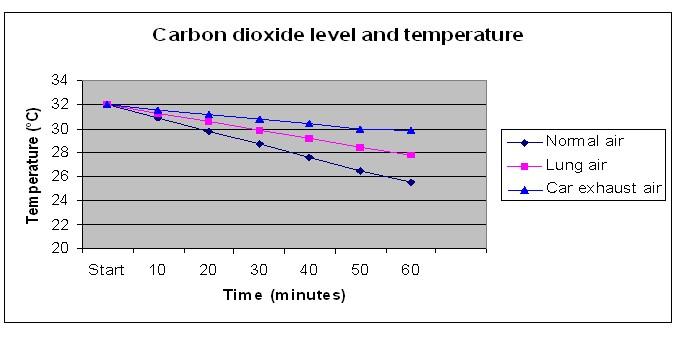| Complexity level: | 4 |
| Project cost ($): | 10 |
| Time required: | 1 hour to prepare, 1 day for the experiment |
| Material availability: | Easily found |
| Safety concerns: | Be careful not to slip and fall when walking on slippery surfaces |
Hypothesis
The ratio of the height of a person to his or her stride does not vary much between genders and over different age groups.
Overview
Walking and stride distance
Walking is the most basic form of transportation for human beings. An average person should be able to walk at a pace of about 3 miles per hour. Walking can also be done for leisure, or as a form of exercise .There are also a lot of health benefits to be gleaned from walking. Persons who walk frequently are known to be less likely to fall victim to serious illnesses such as diabetes, stroke and heart disease.
The distance that a person covers, depends both on the number of steps taken and his or her step length or stride distance. Step length is measured as the distance from the heel of the back foot, to the heel of the foot ahead where it touches the floor. The stride distance is the distance between the heel of the first foot and the heel of the same foot where it touches the floor again. The stride distance is therefore twice the measurement of the step length.
Proper walking techniques make us fitter, healthier and help prevent injuries. "Over-striding" happens when we intentionally increase the distance between our steps by stretching our front feet further than what we would normally do. This does not help us walk any faster, and may even resulting in hurting your heels.
Scientific Terms
Materials
The materials required for this experiment:
- A straight sidewalk about 10 meters long
- A straight wall
- A pail of water
- 4 boys and 4 girls age 10 years old
- 4 boys and 4 girls age 14 years old
- 4 boys and 4 girls age 18 years old
- 1 measuring tape (at least 10 meters long)
Procedure
1. For this experiment, the independent variable is the age and gender of the participants. The dependent variable is the stride distance of the participants. The stride distance is taken by measuring the distance for 10 strides with the measurement tape and dividing by 10. The constant (control variable) is the condition of the sidewalk.
2. The 24 participants are divided into by gender and their age group (10 years, 14 years and 18 years old). All the participants are made to stand against the straight wall and their heights measured one by one. All their heights are recorded in the table below
3. A puddle of water is created using the water in the pail at the beginning of the sidewalk.
4. The 1st group of participants is called out. One by one they are made to walk over the puddle of water and continue walking for another 10 strides. As they walk over the puddle of water, their footprints should appear on the floor of the side walk.
5. Using the measurement tape, measure the distance for 10 strides. The distance for 1 stride can be obtained by dividing by 10. All the distances measured are then recorded in the table below.
6. Repeat steps 4 and 5 of the procedure for each of the other 5 groups of participants, and record the measurements in the table given below.

Results
The results show that age and gender do not affect the ratio of a person's height to his/her stride distance. The ratio between a person's height and stride distance is about 0.4.
| Gender | Age grp (yrs) |
Number | Height (m) |
10 Strides (m) |
1 stride (m) |
Height/ stride(s) |
Average |
| Boys | 10 | 1 | 0.82 | 20.0 | 2.00 | 0.410 | 0.405 |
| 2 | 0.95 | 24.1 | 2.41 | 0.395 | |||
| 3 | 0.88 | 20.7 | 2.07 | 0.425 | |||
| 4 | 0.78 | 20.0 | 2.00 | 0.390 | |||
| 14 | 1 | 1.45 | 37.4 | 3.74 | 0.388 | 0.398 | |
| 2 | 1.54 | 38.3 | 3.83 | 0.402 | |||
| 3 | 1.48 | 36.6 | 3.66 | 0.404 | |||
| 4 | 1.52 | 38.2 | 3.82 | 0.398 | |||
| 18 | 1 | 1.58 | 38.7 | 3.87 | 0.408 | 0.396 | |
| 2 | 1.64 | 41.4 | 4.14 | 0.396 | |||
| 3 | 1.62 | 41.3 | 4.13 | 0.392 | |||
| 4 | 1.56 | 40.2 | 4.02 | 0.388 | |||
| Girls | 10 | 1 | 0.92 | 22.9 | 2.29 | 0.402 | 0.397 |
| 2 | 0.88 | 21.8 | 2.18 | 0.404 | |||
| 3 | 0.93 | 24.0 | 2.40 | 0.388 | |||
| 4 | 1.02 | 25.9 | 2.59 | 0.394 | |||
| 14 | 1 | 1.55 | 38.2 | 3.82 | 0.406 | 0.402 | |
| 2 | 1.45 | 36.6 | 3.66 | 0.396 | |||
| 3 | 1.48 | 36.3 | 3.63 | 0.408 | |||
| 4 | 1.38 | 34.7 | 3.47 | 0.398 | |||
| 18 | 1 | 1.52 | 38.2 | 3.82 | 0.398 | 0.399 | |
| 2 | 1.56 | 38.2 | 3.82 | 0.408 | |||
| 3 | 1.62 | 40.3 | 4.03 | 0.402 | |||
| 4 | 1.58 | 40.7 | 4.07 | 0.388 |
Conclusion
The hypothesis - that the ratio of the height of a person to his or her stride does not vary much between genders and over different age groups - is proven to be true. Therefore, if we measure the height of a person, we can then quite accurately estimate his or her stride distance by dividing his or her height with the ratio of 0.4 as calculated in the table above.
The measurement of stride is necessary for pedometers. A pedometer measures the number of steps that we take in a specified span of time. If we know our stride distance, then the pedometer will be able to tell us the distance we have walked in the specified time.
Also consider
The experiment can also be done by comparing strides when walking barefoot,, and then when walking with slippers and with shoes.
This experiment can also be repeated using different age groups consisting of people in their 20's, 40's and 60's. Also, it would be interesting to know if people from difference races or geographical regions have different stride lengths.
References
Walking - http://en.wikipedia.org/wiki/Walking
How to measure one's step or stride - http://www.ehow.com/how_2317449_measure-ones-step-stride.html

